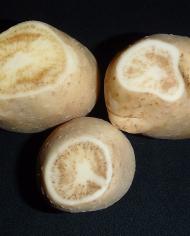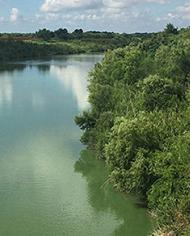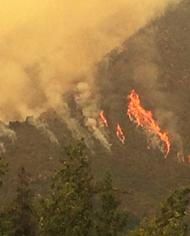Healthy rangelands are essential for ensuring grazing and forage productivity, reducing wind erosion and wildfire risks, and supporting wildlife ecosystems.
Tellus Articles
Common crupina threatens “First Food” growth on tribal lands
Native microbes provide the key to healthier pollinators and better harvests
ARS scientists develop monitoring system to support farmers in their effort to protect the Chesapeake Bay
Researchers team up to battle peanut smut before it reaches American farms
Aquaponic systems may help sweetpotato industry and feed ‘urban deserts.’
ARS researchers in Boise, ID, are studying prescribed fires in western juniper type landscapes to better understand how this land management tool affects the hydrology, habitat, and overall ecosystem of this land type.
ARS researchers are studying the potential benefits of reversing soil erosion on hilly lands
Disposable Consumer Products May Sprout Antimicrobial Resistance
More greenhouse gas comes from water than land.
Scientists are investigating how farmer can maximize profitability with limited water.
Scientists work to define how agriculture affects greenhouse gasses and more
Scientists in potato country have found many new threats to the nation’s spuds
ARS project begins to refill water source beneath Mississippi Delta.
Researchers use long-term data to assess organic practices.
Study shows that the old rule of thumb may not apply to all situations.
Growing switchgrass in non-irrigated pivot corners may help make farmers’ ends meet
Researchers are studying how honey’s bioactive compounds can help against foodborne pathogens.
Researchers have uncovered a promising avenue for enhancing food safety.
See how ARS researchers are using insects to reduce the presence of Arundo, a fast-growing invasive grass.
A site in the middle of Missouri provides critical agricultural research on the national scale.
ARS researchers are downscaling climate data to improve modeling techniques.
A new workshop unites practice with research on the beneficial effects of fire.
New uses for leftover agricultural products promise more revenue and less waste.
Before you know it, you might be fueling your car from a tree or bale of hay.
Advanced research and technology could squeeze every drop from feedstocks.
Small herbivores consider restoration seedlings a delicacy.
ARS has launched a sweeping new initiative known as the Salmonella Grand Challenge.
Alligator weed works its way into Northern California. ARS researchers are seeking biocontrol agents.
New online tool helps California farmers reduce the risks of climate change.
ARS scientists explain how farmers can use nitrogen while both saving money and protecting the planet.
ARS is pioneering a way to move water through a technology known as Managed Aquifer Recharge.
Regardless of the protein source, cook your burger patty until it reaches an internal temperature of 160ºF.
Researchers add pulsed light to an arsenal of tools to decontaminate foods.
ARS researchers study whether the path to reducing antimicrobial resistance is right underfoot.
Hyperspectral imaging technologies can detect and identify foreign materials during meat processing.
A new food safety process: nanobubble "marinade" helps reduce pathogens so you can grill and chill.
ARS scientists identified a source of contamination in Kewaunee County, WI, groundwater.
ARS scientists are employing manure to help dairy farmers tackle climate change.
Remote sensing is quickly becoming a major tool for ranchers for adaptive management.
ARS's decades long turfgrass research focuses on seed production, disease resistance, and more.
No grass: no functioning ecosystems, forage quality lacking; wildlife and livestock would not survive.
The Agricultural Research Service celebrates Earth Day 365 days a year.
Interview with Lisa Ainsworth, molecular biologist at the Global Change and Photosynthesis Research Unit.
ARS is helping to solve the problem of 1.2 million acres of abandoned mined land across Appalachia.
Mississippi Delta farmers may reap the benefits for flooding their fields during the fall and winter.
Researchers are studying genetics of the African Baobab tree to determine how to protect it for generations.
How to build and maintain a snow monitoring station using automated trail cameras.




















































